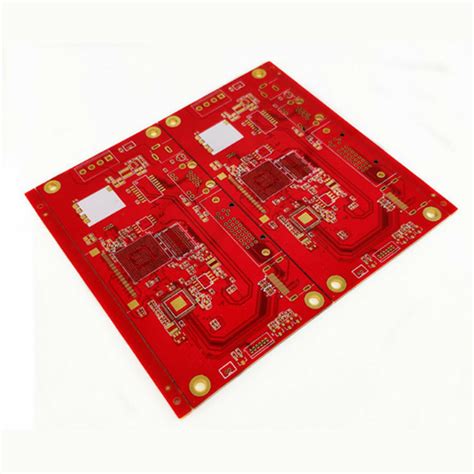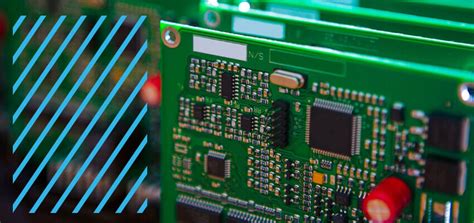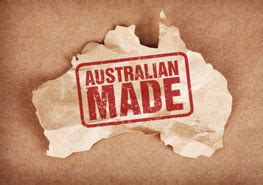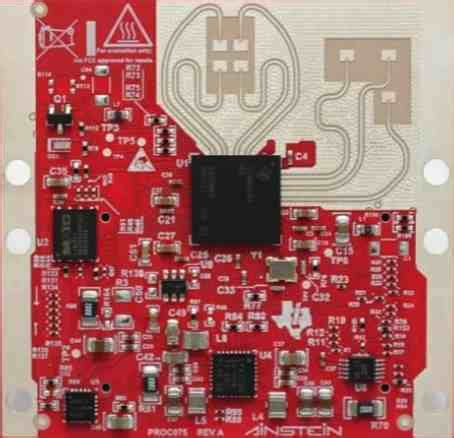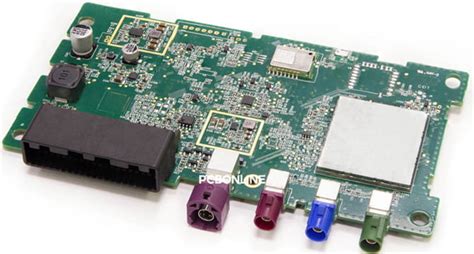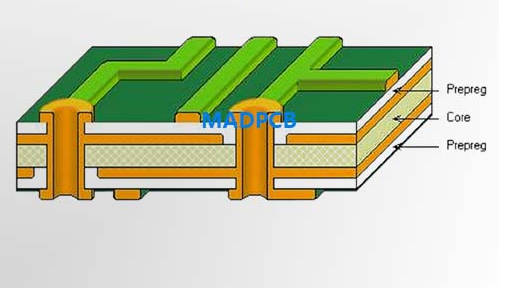PCB Fabrication Equipment: Key Machinery for Modern Manufacturing

Key Takeaways
When optimizing PCB manufacturing processes, understanding core equipment capabilities directly impacts your operational efficiency Modern laser SMT stencil systems enable micron-level accuracy for solder paste application, while automated assembly lines reduce human error and scale production For PCB manufacturing companies, balancing PCB manufacturing cost with quality hinges on selecting precision tools like 3D SPI-enabled printers and high-speed pick-and-place machines
Tip: Partner with vendors offering modular upgrades to future-proof your PCB manufacturing business against rapid technological shifts
Reflow ovens with closed-loop thermal control ensure consistent soldering, critical for minimizing defects in high-volume runs Emerging trends, such as IoT-integrated machinery, further streamline workflows—key for staying competitive When evaluating equipment, prioritize energy efficiency and compliance with industry standards to align with sustainability goals
By integrating these advancements, you’ll not only boost throughput but also adapt to evolving client demands, whether prototyping or mass production The right machinery transforms PCB manufacturing cost structures from fixed overheads into scalable investments
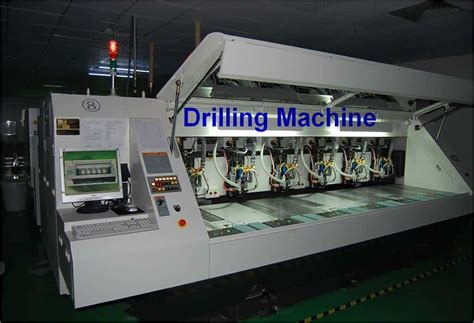
Laser SMT Stencil Cutting Systems
When optimizing your PCB manufacturing workflow, laser SMT stencil cutting systems are indispensable for achieving micron-level precision These systems use high-intensity lasers to carve apertures in stainless steel or polymer sheets, ensuring exact alignment with your board’s design files Unlike mechanical cutting methods, laser technology eliminates burrs and inconsistencies, which directly impacts pcb manufacturing cost by reducing solder paste waste and rework
For pcb manufacturing companies, investing in advanced laser systems translates to faster turnaround times Modern machines can process stencils in under 15 minutes, compared to hours with traditional tools This efficiency is critical for businesses handling high-mix, low-volume orders or rapid prototype development
| Feature | Traditional Method | Laser Cutting | Impact on Production |
|---|---|---|---|
| Precision | ±25 µm | ±5 µm | Higher yield rates |
| Lead Time | 4-6 hours | 10-15 minutes | Faster iterations |
| Material Waste | 8-12% | 2% | Cost savings |
| Flexibility | Limited geometries | Complex designs | Supports miniaturization trends |
By integrating these systems into your pcb manufacturing business, you gain a competitive edge in handling fine-pitch components like 01005 packages or micro-BGAs The ability to adjust aperture sizes dynamically also future-proofs operations as component miniaturization accelerates This combination of speed, accuracy, and adaptability ensures your production line stays aligned with evolving industry demands
Automated PCB Assembly Line Essentials
When scaling pcb manufacturing operations, understanding the role of automated assembly lines becomes critical These systems integrate precision robotics, conveyor systems, and vision-guided placement tools to handle tasks that were once manual—drastically reducing pcb manufacturing cost while improving throughput For pcb manufacturing companies, the choice between inline vs modular configurations depends on production volume: high-speed dual-lane systems suit mass production, whereas flexible modular setups adapt better to mixed batches
Key components like flux applicators and selective soldering systems ensure consistent quality, minimizing defects that could escalate costs Advanced lines also incorporate real-time monitoring, allowing you to track yield rates and identify bottlenecks—a game-changer for optimizing pcb manufacturing business efficiency
But automation isn’t just about speed It enables tighter tolerances for complex designs, such as HDI boards, which manual processes struggle to handle For instance, closed-loop feedback mechanisms adjust placement accuracy to within 25µm, ensuring compatibility with microcomponents
When evaluating equipment, prioritize interoperability with existing pcb manufacturing workflows Machines that seamlessly integrate with design software (e.g., CAD/CAM) and ERP systems reduce setup delays Moreover, energy-efficient models can trim operational costs by up to 18%, directly impacting your bottom line
This adaptability ensures your pcb manufacturing business stays competitive, whether you’re prototyping niche devices or producing consumer electronics at scale
Precision Solder Paste Printing Tech
Achieving consistent solder paste deposition is where PCB manufacturing separates high-yield operations from costly rework scenarios Modern stencil printers employ vision-aligned systems that automatically compensate for substrate warping or misalignment, ensuring micron-level accuracy across every board For PCB manufacturing companies, the shift to laser-cut nano-coated stencils has reduced clogging risks while enabling finer pitch applications below 03mm
You’ll find advanced models integrating real-time viscosity monitoring and automatic pressure adjustments, critical for maintaining print quality as environmental conditions shift This precision directly impacts PCB manufacturing cost by minimizing solder bridging and insufficient deposits—two leading causes of post-reflow defects When evaluating equipment, prioritize printers with closed-loop feedback systems that track pad coverage percentages, a feature that pays dividends in high-volume PCB manufacturing business environments
By pairing these systems with inline 3D solder paste inspection (SPI), you create a fail-safe checkpoint before components enter reflow ovens This tandem approach reduces scrap rates by up to 40% compared to manual verification methods, particularly vital when working with advanced packages like µBGAs or QFNs The latest advancements even leverage AI-driven defect prediction, analyzing print patterns to preemptively flag potential failures before they escalate
Pick-and-Place Machine Advancements
Modern PCB manufacturing relies on high-speed pick-and-place machines to achieve the precision required for today’s compact, multi-layered designs Advances in vision-guided robotics now enable these systems to place components as small as 01005 packages (04mm x 02mm) with micrometer-level accuracy, reducing placement errors by over 60% compared to older models For PCB manufacturing companies, this translates to fewer defects and lower PCB manufacturing cost per unit, particularly when handling complex boards with 50,000+ placements per hour
Innovations like multi-head gantry systems and AI-driven feeder optimization further boost throughput Machines now autonomously adjust nozzle configurations mid-process, eliminating downtime for tool changes This flexibility is critical for PCB manufacturing business operations scaling to meet IoT and 5G device demands Additionally, closed-loop feedback mechanisms continuously calibrate placement pressure and alignment, ensuring consistent quality even during 24/7 production cycles
By integrating machine learning, newer models predict maintenance needs and component feeder issues before they disrupt workflows These advancements not only enhance efficiency but also future-proof assembly lines against evolving component miniaturization trends When selecting equipment, prioritize machines with modular designs to adapt seamlessly to next-generation PCB manufacturing requirements
Reflow Oven Innovations for PCBs
When optimizing PCB manufacturing workflows, reflow ovens remain a cornerstone for achieving reliable solder joints Modern systems now incorporate adaptive thermal profiling, using real-time sensors to adjust temperature zones dynamically This ensures consistent heating across unevenly distributed components—a common challenge in multi-layer boards For PCB manufacturing companies, these advancements translate to fewer defects and reduced rework, directly lowering PCB manufacturing cost while maintaining high throughput
Another breakthrough lies in nitrogen-assisted reflow technology, which minimizes oxidation during soldering By creating an inert atmosphere, manufacturers achieve smoother joint formations, critical for high-density interconnects in advanced electronics This innovation is particularly valuable for businesses scaling their PCB manufacturing business, as it supports finer-pitch components without compromising yield rates
Advanced ovens now also integrate with factory-wide IoT networks, enabling predictive maintenance and energy optimization You can monitor oven performance remotely, preemptively addressing calibration drifts before they impact production Such smart features not only streamline operations but also future-proof your investment as industry standards evolve
By adopting these innovations, manufacturers balance precision with scalability—key factors in staying competitive amid rising demands for miniaturized, high-performance PCBs
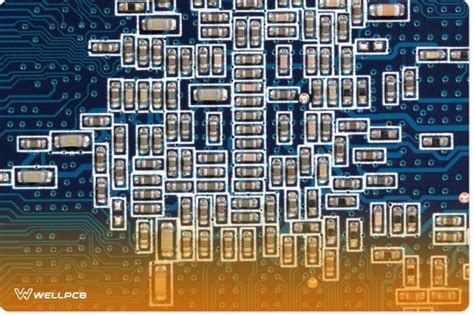
Boosting Electronics Production Efficiency
To maximize throughput in PCB manufacturing, modern facilities leverage integrated automation systems that synchronize critical processes By combining high-speed pick-and-place machines with AI-driven optical inspection, your production line minimizes human intervention while maintaining micron-level accuracy Advanced reflow ovens with closed-loop thermal profiling ensure consistent solder joint quality, directly reducing PCB manufacturing cost by cutting material waste and rework rates
Real-time data analytics further sharpen efficiency—smart sensors monitor equipment health, predicting maintenance needs before downtime occurs For PCB manufacturing companies, this proactive approach slashes unplanned stoppages by up to 40%, according to industry benchmarks Modular assembly setups also let you reconfigure workflows swiftly, enabling a PCB manufacturing business to handle mixed-volume orders without sacrificing cycle times
When evaluating efficiency gains, prioritize systems that balance speed with flexibility Over-optimizing for throughput alone risks bottlenecks during design changes or component shortages Instead, focus on scalable solutions like robotic material handlers paired with adaptive scheduling software These tools let your operation pivot seamlessly between prototype batches and mass production—a critical advantage in today’s fast-evolving electronics markets
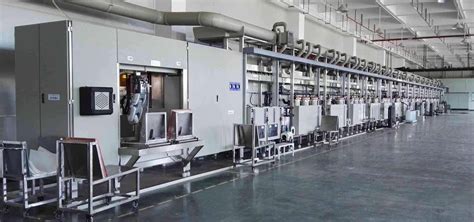
Emerging PCB Fabrication Trends
As PCB manufacturing evolves, staying ahead means adopting technologies that redefine efficiency and precision One notable shift is the integration of AI-driven process optimization, enabling PCB manufacturing companies to predict equipment maintenance needs and reduce downtime by up to 30% This aligns with the growing demand for smart factories, where IoT-enabled machines share real-time data to streamline workflows
Another trend reshaping the PCB manufacturing business is additive manufacturing Techniques like aerosol jet printing allow for rapid prototyping of complex circuits, slashing traditional PCB manufacturing cost by minimizing material waste Hybrid systems combining laser drilling and direct imaging are also gaining traction, offering micron-level accuracy for high-density interconnect (HDI) boards
Sustainability is no longer optional Companies are transitioning to waterless solder masks and halogen-free laminates to meet stricter environmental regulations Meanwhile, modular equipment designs let manufacturers upgrade individual components instead of replacing entire lines—a cost-effective strategy for scaling production
Looking ahead, advancements in flexible PCB substrates and roll-to-roll processing will further blur the lines between traditional rigid boards and wearable electronics For businesses, the key lies in balancing innovation with ROI—adopting trends that align with both technical demands and financial realities

Conclusion
The evolution of PCB manufacturing hinges on strategic investments in advanced machinery, which directly impacts production scalability, quality, and cost-efficiency For PCB manufacturing companies, adopting innovations like automated assembly lines and AI-driven inspection tools isn’t just a competitive edge—it’s a necessity to meet the demands of modern electronics By optimizing PCB manufacturing cost through precision equipment, businesses can reduce material waste and rework while maintaining tighter tolerances for high-density designs
As you evaluate your PCB manufacturing business, consider how integrating smart factory technologies—such as IoT-enabled reflow ovens or predictive maintenance systems—can future-proof operations These tools not only streamline workflows but also align with sustainability goals by minimizing energy consumption The shift toward flexible, high-mix production further underscores the importance of adaptable machinery that balances speed with customization
Ultimately, staying ahead requires continuous adaptation Whether upgrading solder paste printers or leveraging data analytics for process refinement, the right equipment choices today will define your capacity to innovate tomorrow By prioritizing both performance and scalability, you position your enterprise to thrive in an industry where precision and agility are non-negotiable
FAQs
What factors influence pcb manufacturing cost?
Material selection, production volume, and equipment complexity directly impact expenses High-precision pcb manufacturing often requires advanced laser systems and automated quality checks, which can increase initial investment but reduce long-term defects
How do pcb manufacturing companies ensure quality control?
Leading firms integrate optical inspection systems and AI-driven analytics to monitor solder paste application and component placement accuracy These technologies minimize errors, especially in high-density designs common in modern electronics production
Can smaller businesses afford advanced pcb fabrication equipment?
Yes Modular systems like benchtop stencil cutters and compact reflow ovens allow startups to scale operations gradually Many pcb manufacturing business models now offer leasing options to reduce upfront costs for prototyping and low-volume batches
What trends are reshaping pcb manufacturing workflows?
IoT-enabled machinery and predictive maintenance tools are reducing downtime, while hybrid assembly lines combine flexible automation with manual oversight for specialized tasks These innovations help companies balance precision and scalability across diverse projects
Ready to Optimize Your Production Line?
For tailored solutions that align with your pcb manufacturing cost and capacity goals, please click here to explore advanced equipment configurations and industry-specific insights

